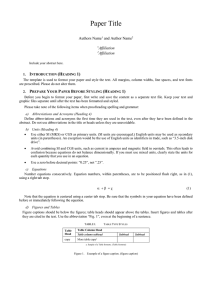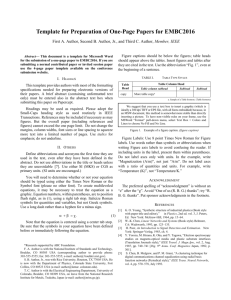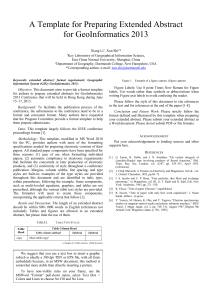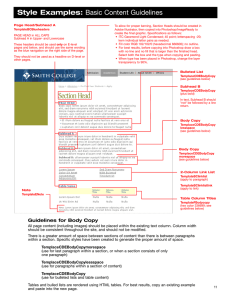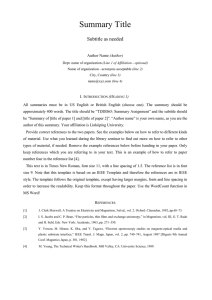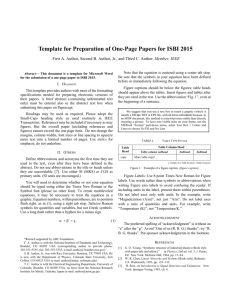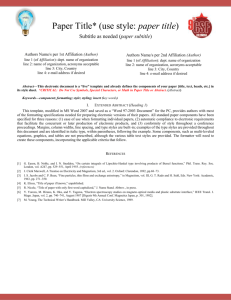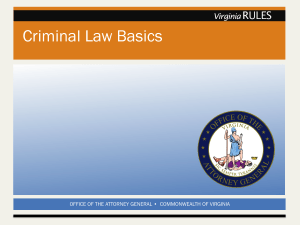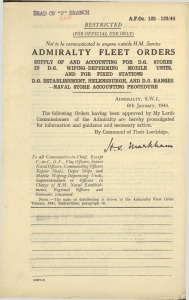How to Write an Abstract: Guide & Instructions
advertisement
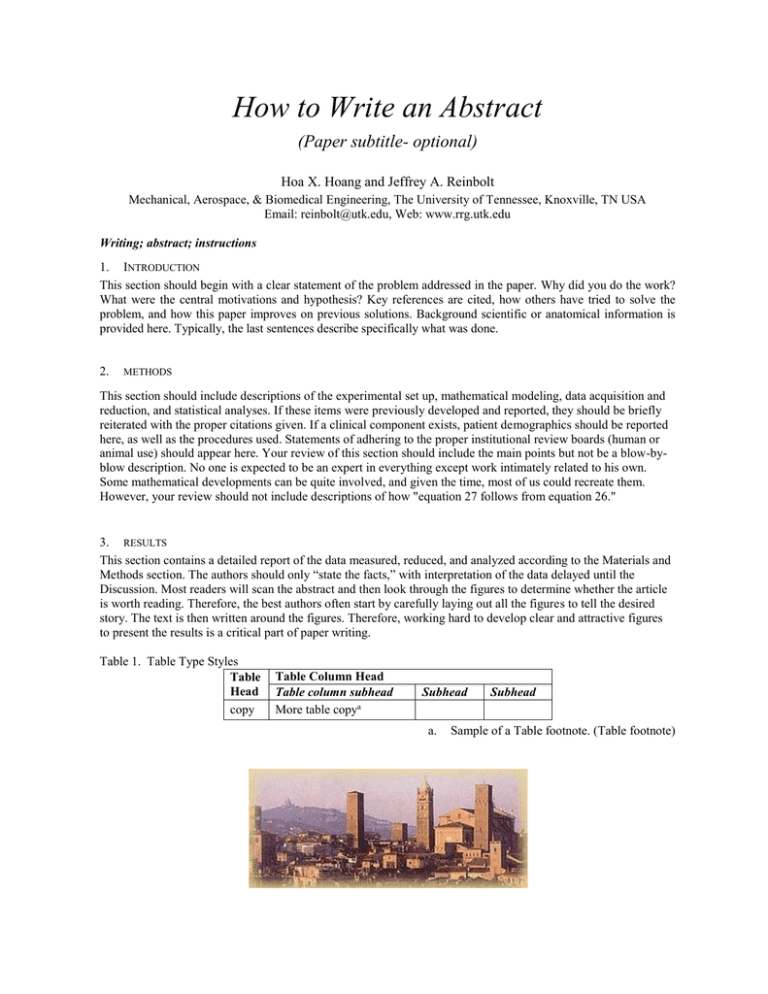
How to Write an Abstract (Paper subtitle- optional) Hoa X. Hoang and Jeffrey A. Reinbolt Mechanical, Aerospace, & Biomedical Engineering, The University of Tennessee, Knoxville, TN USA Email: reinbolt@utk.edu, Web: www.rrg.utk.edu Writing; abstract; instructions 1. INTRODUCTION This section should begin with a clear statement of the problem addressed in the paper. Why did you do the work? What were the central motivations and hypothesis? Key references are cited, how others have tried to solve the problem, and how this paper improves on previous solutions. Background scientific or anatomical information is provided here. Typically, the last sentences describe specifically what was done. 2. METHODS This section should include descriptions of the experimental set up, mathematical modeling, data acquisition and reduction, and statistical analyses. If these items were previously developed and reported, they should be briefly reiterated with the proper citations given. If a clinical component exists, patient demographics should be reported here, as well as the procedures used. Statements of adhering to the proper institutional review boards (human or animal use) should appear here. Your review of this section should include the main points but not be a blow-byblow description. No one is expected to be an expert in everything except work intimately related to his own. Some mathematical developments can be quite involved, and given the time, most of us could recreate them. However, your review should not include descriptions of how "equation 27 follows from equation 26." 3. RESULTS This section contains a detailed report of the data measured, reduced, and analyzed according to the Materials and Methods section. The authors should only “state the facts,” with interpretation of the data delayed until the Discussion. Most readers will scan the abstract and then look through the figures to determine whether the article is worth reading. Therefore, the best authors often start by carefully laying out all the figures to tell the desired story. The text is then written around the figures. Therefore, working hard to develop clear and attractive figures to present the results is a critical part of paper writing. Table 1. Table Type Styles Table Head copy Table Column Head Table column subhead More table copya Subhead a. Subhead Sample of a Table footnote. (Table footnote) Figure 1. Use words rather than symbols or abbreviations when writing Figure axis labels to avoid confusing the reader. Figure 2. Use words rather than symbols or abbreviations when writing Figure axis labels to avoid confusing the reader. 4. DISCUSSION This section contains a more detailed cited history of the problem under study and others' solutions. The current study should be related to existing work, how it differs, how it is the same, and how it is novel. Results should not be repeated except in general terms to support conclusions drawn from these results. Critical assumptions and limitations should be discussed along with their potential impact on the results. Some questions to help you in this section; What does it all mean? What hypothesis were proved or disproved? What did I learn? Why does it make a difference? 5. [1] [2] [3] [4] [5] [6] [7] REFERENCES Baten, C.T.M., 2007. Advancements in sensor-based ambulatory 3D motion analysis. J. Biomechanics 40, S422-S422. Wassink, R, Baten, C, Veltink, P., 2007. Classifying human lifting activities automatically by applying hidden Markov modeling technology. J. Biomechanics 40(2), 428, 2007. J. Clerk Maxwell, A Treatise on Electricity and Magnetism, 3rd ed., vol. 2. Oxford: Clarendon, 1892, pp.68– 73. I. S. Jacobs and C. P. Bean, “Fine particles, thin films and exchange anisotropy,” in Magnetism, vol. III, G. T. Rado and H. Suhl, Eds. New York: Academic, 1963, pp. 271–350. K. Elissa, “Title of paper if known,” unpublished. R. Nicole, “Title of paper with only first word capitalized,” J. Name Stand. Abbrev., in press. Y. Yorozu, M. Hirano, K. Oka, and Y. Tagawa, “Electron spectroscopy studies on magneto-optical media and plastic substrate interface,” IEEE Transl. J. Magn. Japan, vol. 2, pp. 740–741, August 1987 [Digests 9th Annual Conf. Magnetics Japan, p. 301, 1982].
